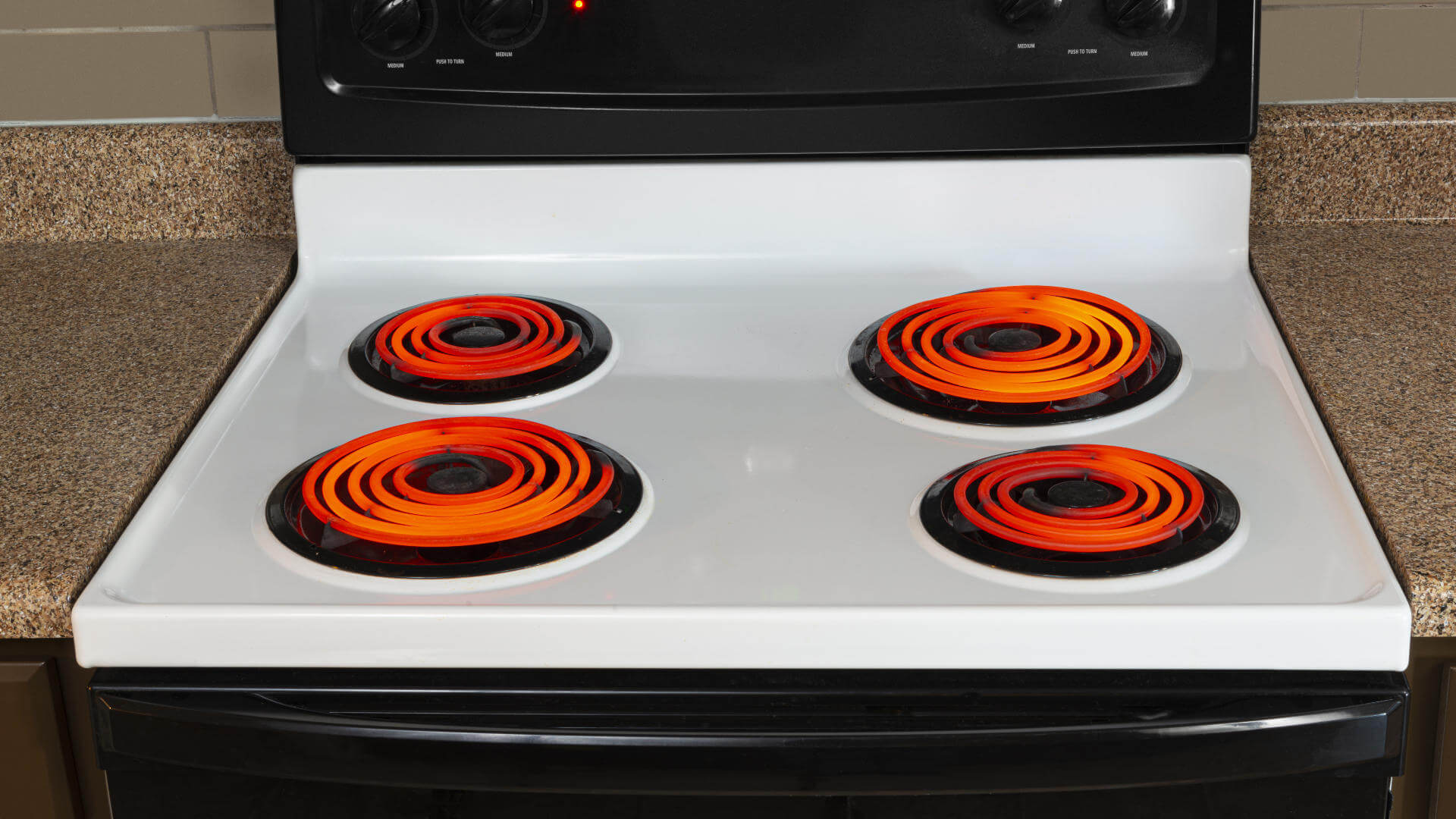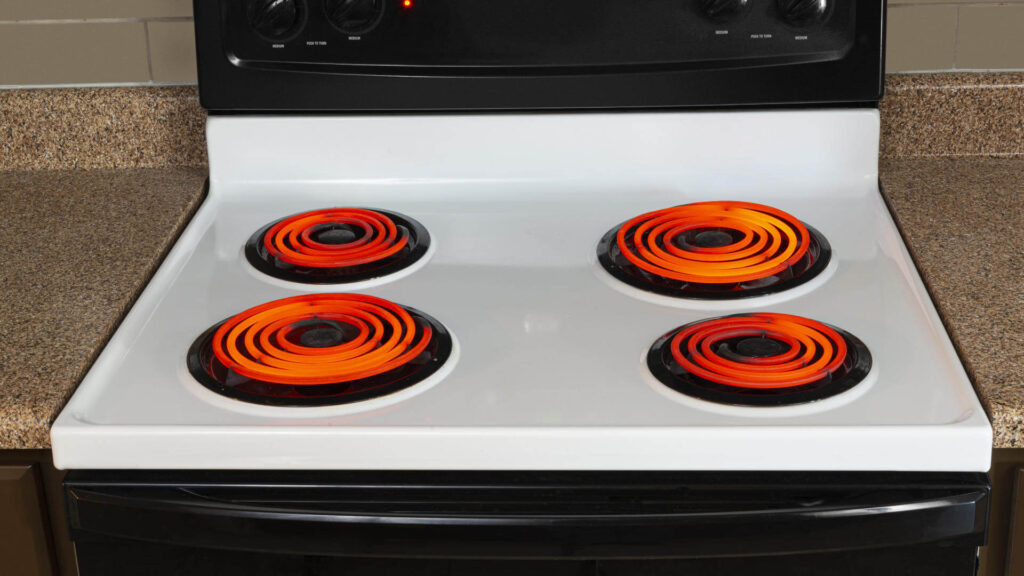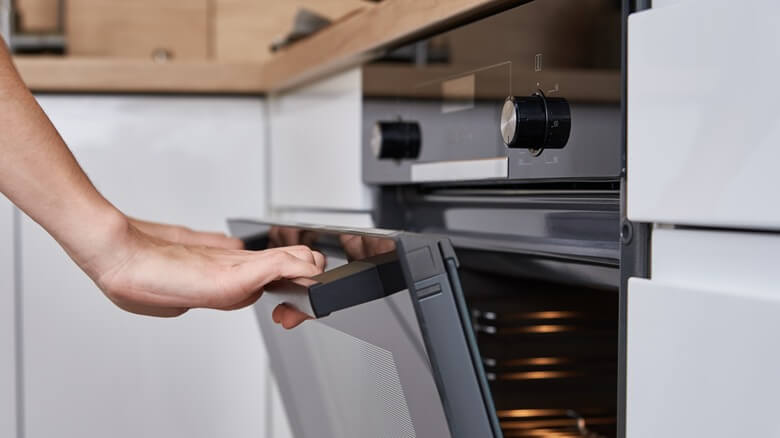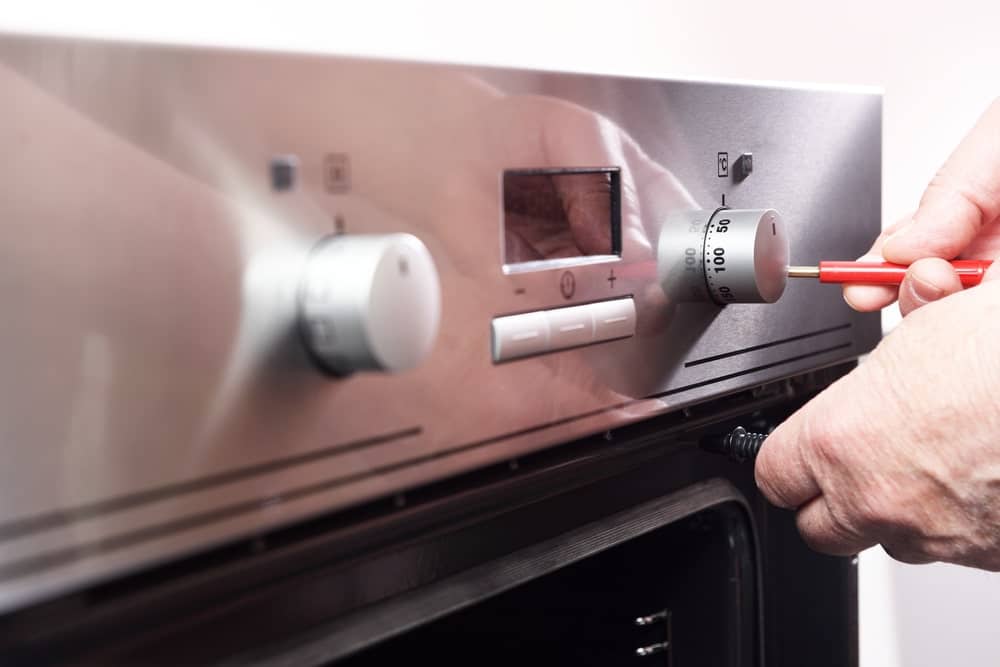

Cooking up a storm in your kitchen is a joy, but when your electric range starts acting up, it can quickly turn into a frustrating ordeal. Fear not, because in this in-depth guide, we’re going to explore common electric range problems and equip you with the know-how to troubleshoot and resolve them. From the range not turning on to uneven cooking and everything in between, we’ve got you covered. So, let’s roll up our sleeves and get started on resolving those nagging range issues.
The Range Won’t Turn On
You’re ready to whip up a delicious meal, but your electric range seems to have gone on strike. No lights, no heat, nothing! What could be the issue here?
Possible Causes
- Power Outage: Sometimes, the most apparent solution is the right one. Check if there’s a power outage in your area, and if not, head over to your electrical panel and examine the circuit breaker. A tripped circuit can be the culprit. To resolve this, flip the circuit breaker back to the “on” position.
- Loose Power Cord: Ensure that your electric range is securely plugged into the power outlet. Over time, cords can become loose, resulting in a lack of power. Simply reseat the power cord, and you might be good to go.
- Faulty Outlet: The problem might not be with your range but with the electrical outlet itself. Try plugging another appliance into the same outlet to check if it’s working. If not, you’ll need to call in an electrician to fix the outlet.
Uneven Cooking
You’re attempting to whip up a culinary masterpiece, but the half-burnt, half-raw result on your plate tells a different story. What’s causing this uneven cooking?
Possible Causes
- Uneven Heating Element: If your electric range’s burners are heating unevenly, it could be due to a damaged or faulty heating element. Each burner has its own heating element, and if one is malfunctioning, you’ll experience uneven cooking. In this case, the damaged heating element needs replacement.
- Cookware Issues: Sometimes, the issue isn’t with the range but with the cookware you’re using. Ensure that you’re using flat-bottomed cookware that fits the size of the burner. Uneven pots and pans can cause uneven cooking.
- Dirty Oven: A build-up of food debris and grease in your oven can obstruct the heat distribution, resulting in uneven cooking. Cleaning your oven thoroughly can make a significant difference.
Burners Aren’t Heating Up
You’ve cranked up the dial, but your burners remain as cool as a cucumber. What’s causing this chilly reception?
Possible Causes
- Burner Coil Issues: Electric range burners are typically equipped with coil elements. Inspect these coils for visible damage. If you notice any, it’s time to replace the damaged ones.
- Control Panel Glitch: Sometimes, the control panel might experience glitches. If you’re dealing with unresponsive burners, try resetting the control panel by turning off the power to the range for a few minutes. If this doesn’t work, you might need to replace the control panel.
- Wiring Problems: Faulty or loose wiring connections can cause the burners to not heat up properly. Inspect the wiring connections behind the control panel and burners, and if you find any issues, repair or replace the wiring as needed.
The Oven Temperature is Off
You’ve meticulously followed a baking recipe, but your cake turns out overcooked or undercooked. Is your electric range’s oven temperature playing tricks on you?
Possible Causes
- Faulty Thermostat: If your oven’s temperature is consistently off, it could be due to a faulty thermostat. To check this, use an oven thermometer to compare the actual oven temperature with the set temperature. If there’s a significant difference, you’ll need to recalibrate or replace the thermostat.
- Poor Insulation: Check the seal around the oven door. Any gaps or damage in the seal can result in heat loss, causing temperature fluctuations. Replacing the seal can often resolve this issue.
- Baking Stone Issues: Some electric ranges have a baking stone or pizza stone at the bottom of the oven. If this stone is damaged, it can affect heat distribution. Inspect the stone for any cracks or damage and replace it if necessary.
Smoke and Unusual Odors

Your kitchen turns into a smoky mess, and the smell isn’t exactly appetizing. What’s causing this unwelcome development?
Possible Causes
- Spills and Residue: Over time, food spills and residue can accumulate in your oven or on the cooktop, resulting in smoke and unpleasant odors when you cook. Regularly clean your oven and cooktop to prevent this issue.
- Faulty Broil Element: The broil element in your oven can emit smoke or unusual odors if it’s malfunctioning. If you notice this issue, it’s a sign that you need to replace the broil element.
- Wiring Problems: As with burner issues, wiring problems can also lead to smoke and unusual odors. Inspect the wiring connections behind the control panel and inside the oven. If you find any issues, repair or replace the wiring as needed.
Self-Cleaning Woes
You’ve decided it’s time to give your oven a good clean, but the self-cleaning function doesn’t seem to be working as expected. What’s going on with this feature?
Possible Causes
- Door Latch Issues: The self-cleaning cycle won’t start if the oven door isn’t securely latched. Check the door latch mechanism and ensure it’s functioning correctly. Replace it if necessary.
- Overheating: During the self-cleaning cycle, the oven reaches extremely high temperatures to burn off food residue. If it’s overheating, it can lead to malfunctioning. Make sure the oven is not overheating during the cleaning cycle.
- Faulty Control Panel: The control panel plays a significant role in initiating and managing the self-cleaning cycle. If it’s malfunctioning, you might encounter issues with self-cleaning. In such cases, it’s advisable to replace the control panel.
Noisy Operation
Your once-silent electric range has turned into a cacophony of clatters and clanks. What’s causing all that noise?
Possible Causes
- Noisy Fan or Motor: Electric ranges often have fans and motors that can become noisy over time. Lubricating or replacing these components can resolve the issue.
- Loose Parts: The constant heating and cooling in your range can lead to components and screws becoming loose. Tighten any loose parts, such as screws and brackets, to minimize noise.
- Foreign Objects: Sometimes, foreign objects like utensils or food debris can get trapped in the oven’s fan or motor, causing noise. Inspect and remove any foreign objects that might be causing the commotion.
In your pursuit of troubleshooting electric range problems, always prioritize safety. Before performing any maintenance or repairs, make sure to unplug the range and wear appropriate safety gear. Electrical appliances can be tricky, but with a little patience, some basic tools, and the guidance provided in this article, you can get your trusty electric range back in action, cooking up delicious meals once again.
Now, let’s dive even deeper into some additional tips and tricks for maintaining your electric range and keeping it in tip-top shape.
Maintaining Your Electric Range

Once you’ve successfully troubleshooted and resolved any issues with your electric range, it’s crucial to keep it well-maintained to prevent future problems. Here are some maintenance tips to ensure your range stays in excellent working condition:
- Regular Cleaning: Keeping your electric range clean is one of the most effective ways to prevent issues. Clean the cooktop and oven after each use to avoid the build-up of food residues and spills that can cause smoke and odors. Use appropriate cleaning products and follow the manufacturer’s instructions.
- Check the Power Cord and Plug: Periodically inspect the power cord and plug for any signs of wear or damage. If you notice any issues, replace the cord or plug to ensure a secure electrical connection.
- Test the Burner Elements: To ensure even heating, occasionally test each burner element. Turn them on to their highest setting and observe whether they heat evenly and reach the desired temperature. If you notice any inconsistencies, consider replacing the elements.
- Clean and Calibrate the Oven Thermostat: Calibrating the oven thermostat is a simple process that can be done using an oven thermometer. If you find that your oven temperature is consistently off, consult your owner’s manual for calibration instructions.
- Replace Seals and Gaskets: The seals and gaskets around the oven door can wear out over time, leading to heat loss and uneven cooking. If you notice any gaps or damage, replace them to maintain proper insulation.
- Lubricate Moving Parts: Some electric ranges have moving parts like fans and motors. Lubricate these parts as per the manufacturer’s recommendations to reduce noise and ensure smooth operation.
- Inspect Wiring Connections: Regularly inspect the wiring connections in your electric range. Loose or damaged wires can lead to various issues, so it’s essential to catch and address them early.
By following these maintenance practices, you can extend the lifespan of your electric range and minimize the need for troubleshooting and repairs.
Final Words
Your electric range is a workhorse in the kitchen, and when it encounters problems, it can be frustrating. However, armed with the knowledge provided in this comprehensive guide, you’re better prepared to troubleshoot and resolve common electric range issues. From power problems and uneven cooking to temperature discrepancies and self-cleaning malfunctions, you now have the tools to take on these challenges.
Remember, safety should always be a priority when working with electrical appliances. Unplug your range and wear appropriate safety gear before performing any maintenance or repairs. And if you ever find yourself uncertain or uncomfortable with a particular repair task, don’t hesitate to seek professional assistance.
With the right care and maintenance, your trusty electric range will continue to serve you well, providing delicious meals for years to come. So, keep those burners hot, the oven warm, and your culinary adventures thriving!
Electric Range Troubleshooting FAQ
Got burning questions about your electric range? We’ve got answers. Check out this FAQ to find solutions to some of the most common electric range problems.
1. My electric range won’t turn on. What should I do?
Possible Solutions:
- Check for Power Outages: Ensure there isn’t a power outage in your area. If not, inspect your circuit breaker and reset it if it’s tripped.
- Inspect the Power Cord: Make sure the power cord is securely plugged into the outlet.
- Test the Outlet: Try plugging another appliance into the same outlet to see if it’s working. If not, contact an electrician to fix the outlet.
2. Why is my electric range heating unevenly?
Possible Solutions:
- Inspect Heating Elements: If it’s an oven issue, check for damaged or faulty heating elements and replace them.
- Use Appropriate Cookware: Ensure you’re using flat-bottomed and correctly-sized cookware on the cooktop.
- Clean the Oven: Remove any food debris in the oven that may obstruct even heat distribution.
3. What can I do if the burners on my electric range aren’t heating up?
Possible Solutions:
- Check Burner Coils: Examine the coil elements for visible damage and replace any damaged ones.
- Reset Control Panel: Reset the control panel by turning off the range’s power. If that doesn’t work, consider replacing the control panel.
- Inspect Wiring: Inspect wiring connections and repair or replace any damaged wires.
4. My electric range’s oven temperature seems off. What could be the problem?
Possible Solutions:
- Calibrate the Thermostat: Use an oven thermometer to calibrate or replace the oven thermostat if the temperature is consistently inaccurate.
- Check Oven Seal: Inspect the oven seal for gaps or damage and replace it to maintain proper insulation.
- Examine Baking Stone: Inspect the baking stone (if present) for cracks or damage, and replace if necessary.
5. Why is my electric range producing smoke and unusual odors during cooking?
Possible Solutions:
- Clean Thoroughly: Ensure the oven and cooktop are clean to prevent the build-up of food spills and residue that can cause smoke and odors.
- Replace Broil Element: If the broil element is malfunctioning, replace it.
- Inspect Wiring: Check the wiring connections behind the control panel and inside the oven for issues, and repair or replace as needed.
6. The self-cleaning function on my electric range isn’t working. What’s the issue?
Possible Solutions:
- Check the Door Latch: Ensure the oven door is securely latched before starting the self-cleaning cycle. Replace the door latch if necessary.
- Prevent Overheating: Make sure the oven is not overheating during the self-cleaning cycle.
- Replace Control Panel: If the control panel is malfunctioning, consider replacing it to resolve self-cleaning issues.
7. My electric range is making unusual noises. How can I silence it?
Possible Solutions:
- Lubricate or Replace Noisy Components: If fans, motors, or other components are noisy, lubricate or replace them.
- Tighten Loose Parts: Tighten any loose screws or components inside the range.
- Remove Foreign Objects: Inspect and remove any foreign objects that may be causing noise.
